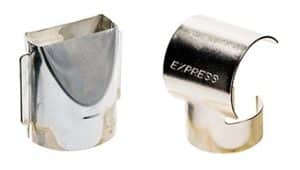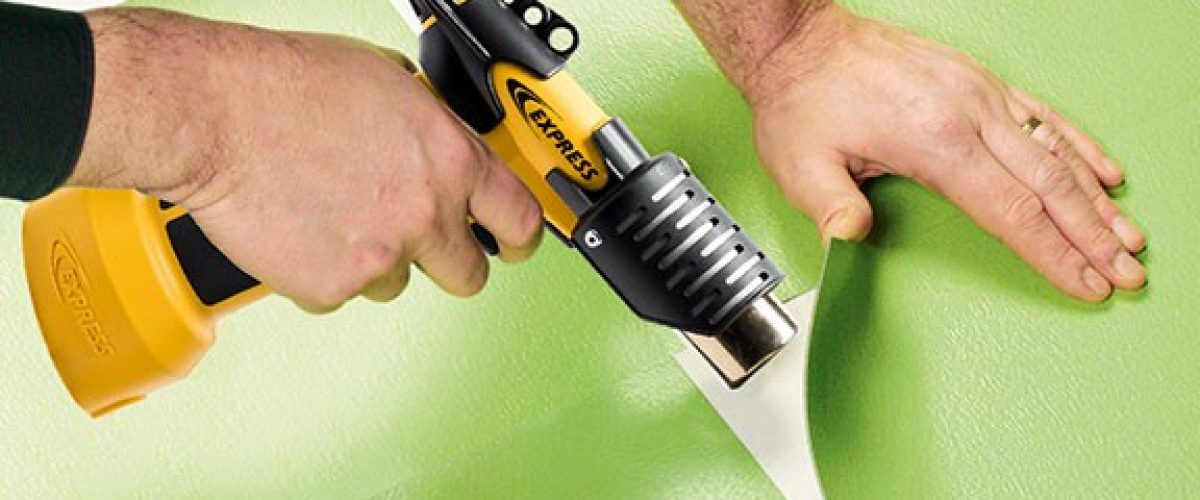A heat gun is the ideal tool if you need to remove PVC floor tiles or wall coverings when renovating a building, In this short tutorial we will explain how to proceed.
Preparing the work site and the tools to be used
In addition to your heat gun (and the appropriate nozzles), you must use other tools, as well as protect for yourself. Goggles are needed, and gloves suitable for heat, such as thick garden gloves (avoid using melting materials such as plastic household gloves) and a face shield to protect you from both the emanations of the PCV, and possible splashes.
You should work in a ventilated area, as PVC in direct contact with heat produces vapours that it is advisable to avoid breathing.
As regards equipment, a tool to use as a lever on your PVC floor tiles should be used. A painting knife will be useful to scrape your walls (and all flat surfaces), as well as to remove the adhesive residues left by the PVC floor tiles. Use a triangular scraper to reach corners and angles with furniture.
When scraping a wall, place a tarpaulin on the floor so that you can easily collect any residue that falls off.
When removing PVC floor tiles, you may have to deal with glue residues that will remain on the floor. Use acetone to get rid of it. If you are using large amounts of glue, soak paper towels with acetone and leave for a minute or two before scraping with your painting knife.
The nozzles of the thermal stripper
The different nozzles equipping the autonomous hot air gun Ref. 4600

- the nozzle with an integrated blade strips at the same time as you scrape, which allows you to treat large flat surfaces;
- the cone-shaped nozzle allows you to direct the hot air to a specific point;
- the flattened nozzle spreads the heat over a larger area.
Using the heat gun
Place the right nozzle on your heat gun. Plug in and turn on your thermal stripper, and wait a minute for the air to heat to the right temperature, depending on the materials to be stripped.
The temperature can be programmed from your heat gun: within 300°C for wood or PVC floor tiles, and between 500 and 600°C for metal.
Hold the nozzle of your thermal stripper a few centimetres from the surface to be stripped, without ever touching it. Do not always stay in the same place, but keep it moving to heat the entire tile and avoid the risk of deforming it. Then lever it with your tool to remove it.
If you are scraping a piece of furniture or a wall, use the scraper as you move forward with your stripper. When working with wood, you should follow the grain so as not to damage the surface.
Cleaning the scraper and removing residues
Once you have finished, turn off your heat gun and unplug it if necessary. Allow it to cool, then clean the nozzle with paper towels.
Collect all waste, tiles, PVC shavings, etc.,. Under no circumstances should you throw them in your household waste container. Plastic, PVC and paint residues must be taken to the waste disposal centre.
If you believe that your floor coverings contain particularly toxic products, such as lead paint, put them in a sealed package and inform the waste disposal centre manager, who will tell you where to put your waste bag.
